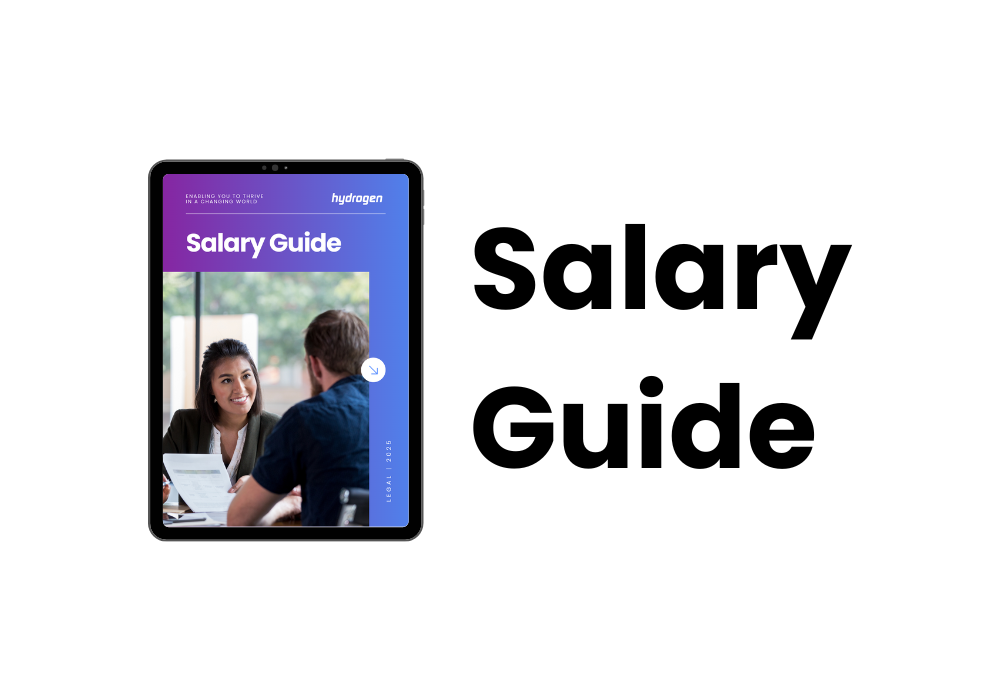by Charlotte Colley
•
17 October 2024
In a world where remote work is the norm, especially within STEM industries, keeping employees engaged isn’t as simple as adding more communication tools. If you’re relying on Slack or Teams to be the sole solution to engagement, you’re missing the bigger picture. What truly drives engagement is the culture you build - a culture where employees feel valued, motivated, and genuinely connected, no matter where they're working. We’re here to show you how a strong People function, strategic use of platforms, a compelling value proposition, and effective performance measures all come together to create that culture. Let’s get into it! Building relationships Your People team is at the heart of creating an engaging culture, but this doesn’t mean just ticking boxes with routine check-ins. Instead, it’s about creating experiences that make remote workers feel like they’re part of something bigger. Learning and development: L&D programs should inspire, not just exist to fill a quota. STEM professionals thrive when they’re learning new skills and tackling challenges that stretch their abilities. By offering opportunities to upskill and engage in meaningful projects, you’re investing in their growth and showing them they’re valued. This is crucial - especially as 84% of remote workers report that remote work makes them happier - largely due to the flexibility and autonomy it offers . The power of flexibility: For many remote workers, having control over their work environment boosts productivity. Senior Digital Business Analyst, Adam Ash, shares, “I have my home office set up exactly how I need it for me, to be the most productive I can be. I am free from distractions. I can make lunch for me and my wife, enjoy it in the garden with our dog, and reset properly ahead of the afternoon. It also allows me to work an extra hour or two when needed, without feeling like I should be charging my clients for the time.” For professionals like Adam, flexible working arrangements not only enhance productivity but also improve work-life balance and client relationships. Human connection: Virtual coffee chats might sound a bit cliché, but when designed thoughtfully, these interactions can become moments of genuine connection. Dean Jennings, Head of Talent at Hydrogen Group, says, “There is so much online that can bring a team together – virtual team escape rooms can be really cost effective! As tech advances, it’s getting easier to have individuals working seamlessly together. I’ve even seen a few VR headsets in the workplace!” Avoiding communication overload: Relying solely on communication tools like Teams or Slack isn’t the answer to building engagement. Just because people are “always available” doesn’t mean they feel connected. In fact, 48% of remote workers have reported working longer hours, which can easily lead to burnout if not managed well. The focus should be on creating a space where people feel free to share ideas, get involved in decision-making, and know their well-being matters. Structured check-ins: Consistent, purposeful check-ins can keep remote teams aligned and motivated. Life Science Consultant, Danniella Roche , says, “We have regular catch ups over Teams to kick off the week, a mid-week ‘health check’, and a Friday ‘wrap-up’. This enables us to have more touch points with one another and ensure we’re all working towards a common goal. We also have Teams channels to share market intel, leads and wins, which enables us to collaborate.” Leveraging platforms properly Yes, digital platforms are crucial for remote work, but they need to be used with intention. Tools like Slack, Teams, or Zoom are great for facilitating communication, but they’re not a magic fix for engagement. If these tools aren’t integrated into a bigger strategy, they can end up being a source of digital fatigue rather than connection. Transparency and recognition: Project management tools like Trello or Asana can help remote workers see how their contributions tie into larger projects, giving them a sense of ownership and progress. This is particularly important when considering that only 36% of remote workers are fully engaged, making transparency and recognition crucial for improving engagement levels. Inclusive celebrations: Dean Jennings , Head of TA at Hydrogen, suggests, “Ensuring there’s no difference in recognition wherever workers choose to work from is key. Promotions, competitions and shout outs should always be multi-channel and celebrated in the same manner. If you do have something happening in the office, make sure you can stream it and get your remote workers involved!” Learning opportunities: STEM employees crave opportunities to grow, so offering access to courses on platforms like Coursera, or hosting internal webinars, can make a huge difference. Chloe Lam-Moores, Manager at Hydrogen Group, says, “I believe that remote workers could perhaps benefit from further training on how to be effective when working remotely, which could be as simple as identifying all of the tools and platforms that are available to them.” Important: Even though platforms can help collaboration, don’t assume that adding more tools equals more engagement. It’s about using these platforms to create a sense of shared purpose and achievement, rather than just piling on more ‘pings’. Employer Value Proposition: A culture that goes beyond perks When it comes to remote work, your employer value proposition matters more than ever. It’s about answering the question: ‘Why would someone choose to work for your company over any other when they can work from anywhere? ’ . It’s not just about the pay cheque. Remote employees have options, and they’ll go where they feel inspired and valued. In fact, 50% of job seekers would be willing to take a pay cut for the opportunity to work remotely. Figure out what sets you apart: STEM businesses should highlight unique opportunities, like access to cutting-edge projects or a strong commitment to social responsibility. Supporting mental health, professional development, and flexibility should be core to your culture. Accommodate unique needs: Practical support, like a home office budget or adjusted work hours, can make a big difference. Workers like Patricia Washburn, a Multi-Platform Editor, exemplify that remote work can be a necessity, not just a perk: “If I cannot work from home, I cannot work.” Others, like Kevin Parkings, a Senior Java Developer, emphasise that remote work makes living in certain locations possible. Career progression: People need to see a path forward, even from a distance. Being open about growth opportunities can keep them engaged. A higher salary can only go so far; it’s the promise of being part of a culture where they can envision a future and make an impact that keeps employees around. Performance measures – trust and impact How you measure performance says a lot about your culture. If your approach to remote work is to track hours or logins, you’re missing the point. People want to be judged on the impact they have, not the time they spend online. Shifting to output-based metrics - like focusing on the quality of work and the results delivered - makes all the difference. Adopt goals and KPIs: For STEM workers solving complex problems, KPIs create a sense of purpose and alignment. It helps them see how their work ties into the broader mission and keeps them motivated. Regular feedback: Regular feedback sessions help remote workers feel recognised and track their progress. And remember, building trust is key - using monitoring software to track every keystroke doesn’t build trust - it breaks it. It sends the message that you don’t believe in your employees’ ability to manage their own work. Trust o ver surveillance : This is particularly relevant given that low employee engagement costs the global economy $8.9 trillion. Focusing on trust and impact can turn this trend around, driving a more engaged and effective remote workforce. Bringing it all together So, what’s t he bottom line? Engagement doesn’t come from more tools or stricter performance measures. It comes from a culture where people feel like they belong, are encouraged to grow, and can see how their work makes a difference. People teams, smart platforms, a strong value proposition and fair performance measures all contribute to this, but it’s the culture you create that will keep people engaged - no matter where they’re working from. In STEM industries, where innovation is everything, this kind of culture isn’t just nice to have - it’s a competitive advantage. It’s about creating a workplace where people don’t just show up but feel excited to bring their best. When your employees are truly engaged, they’re not just part of the team - they’re driving it forward. Interested in learning more about how to keep remote workers engaged? ---------------------------------------------------------- We're committed to enabling our clients and candidates to thrive in a constantly changing world. By helping businesses grow and supporting people in leading more fulfilling lives both at work and beyond, we aim to make a lasting impact. Our ultimate goal is to become the world’s most valued and trusted workforce solutions company, trusted by our people, our clients and our communities.













